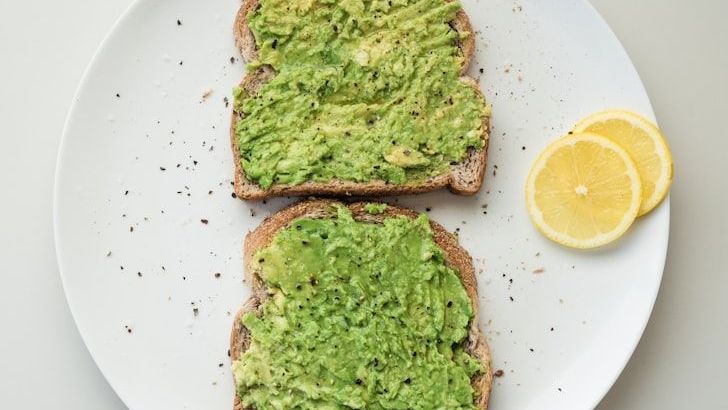Truffle Oil Everything

Walk into any mid-tier restaurant and you’ll find truffle oil drizzled over fries, tossed through pasta, and mixed into mac and cheese. The obsession with truffle mushrooms, especially when synthetic truffle oil is being used, overpowers dishes, lacks nuance and often masks what could have been great ingredients. Professional chefs have grown frustrated watching this once-special ingredient become a lazy shortcut.
Gordon Ramsay has been a vocal critic of truffle oil, reportedly calling it problematic when overused, as people tend to pour it out in abundance. The celebrity chef isn’t alone in his criticism. Martha Stewart has also expressed criticism of truffle oil, reportedly stating that it doesn’t belong in kitchens and can ruin recipes.
The real kicker? Most truffle oils actually contain no truffles at all, as most truffle oils on the market are actually made only of olive oil and lab-made compounds that mimic flavors found in real truffles. Most truffle oils aren’t even made with actual truffles, as they are made with synthetic ingredients, namely 2,4-dithiapentane, which mimics the flavor of real truffles. Professional chefs know the difference immediately.
The taste is reminiscent of sweat, body odor and rot, and beyond the taste, the smell and the appearance are also incredibly off-putting. Truffles contain androstenone, a pheromone that a significant portion of the population reportedly finds unpleasant, similar to how some people think cilantro tastes like soap, truffles are surprisingly polarizing. Yet restaurants continue charging premium prices for dishes drenched in synthetic substitutes.
Avocado Toast

Sean Thompson, executive chef at Porter House, admits about avocado toast: “Look, I have no problem with it, but the fact that it’s been considered a trend for years still baffles me”. This simple dish has somehow maintained its grip on brunch menus nationwide, commanding prices that would make your grandmother faint.
Avocado toast is a brunch specialty that caters to the Instagram generation – a group of millennials that would like a delicious-looking dish instead of a delicious-tasting one. It’s overpriced for what you get, and the plate is nothing more than bread and avocado. It’s a hard pass for many people. The economics are simple yet absurd: restaurants charge fifteen to twenty dollars for what amounts to two ingredients you could prepare at home in under five minutes.
As we move further into 2024, the once-trendy avocado toast variations are losing their appeal among discerning travelers, with chefs and diners alike turning away from elaborate $20 avocado toast creations topped with everything from edible flowers to gold leaf. A survey of 500 frequent flyers showed that 68% would prefer airlines to offer simpler, less expensive breakfast options instead of elaborate avocado toast variations.
For all the hype, avocados are fine, their mild flavor isn’t the point – it’s the $15 avocado toast culture that got them here. American avocado consumption has increased dramatically over recent decades, with consumption rising from hundreds of millions of pounds in the 1980s to billions of pounds by 2020. The avocado industry has successfully convinced an entire generation that mashed fruit on bread constitutes fine dining. Smart marketing, questionable cuisine.
Caviar On Everything

You can find caviar on pretty much anything these days, from a lobster roll, to a fried chicken sandwich, to even just taking a caviar bump off your hand. This has made caviar more of a mainstream, household staple rather than this luxury, special item. Chefs watch in dismay as this once-revered delicacy gets sprinkled on dishes like expensive seasoning salt.
Uni, truffles, caviar – these ingredients used to be special. Now they’re often tossed onto dishes just to make them seem more luxurious for Instagram. We’re living in a time where presentation is sometimes prioritized over purpose, and the integrity of a dish can get lost in the hype, explains David Garcia, executive chef of Eddie & Vinny’s.
Chuck Valla, chef and owner of Valla Table who has worked as a private chef in New York City for many years, considers caviar and truffle the most overrated food trends, admitting “I just don’t have a fancy enough palate to understand why salty little fish roe are so popular”. This honest assessment from a professional who’s served the wealthy for years cuts through the pretense surrounding caviar culture.
InsideHook polls 17 working chefs on the food fads they’re tired of, and a clear theme emerges: excess for Instagram’s sake. Many lament the “liberal use of luxury” – caviar, truffles, uni and Wagyu layered onto everything from burgers to omakase bites – arguing that such gilding buries flavor and cheapens what should feel special. The problem isn’t caviar itself, but rather its thoughtless application to dishes where it serves no purpose beyond inflating the check.
Gabriel Kreuther believes that caviar shouldn’t be mixed and eaten with anything, stating “It should enhance a dish, both in flavor and experience, not just serve as a decorative garnish”. Professional chefs understand that true luxury ingredients require restraint and respect, not the heavy-handed approach that dominates current menu trends.
The culinary world finds itself at a crossroads between authentic craftsmanship and social media spectacle. These three dishes represent everything wrong with modern dining culture: style over substance, marketing over mastery, and Instagram appeal over actual taste. Maybe it’s time to trust the professionals who’ve dedicated their careers to understanding what makes food truly exceptional.
What do you think about these overrated dishes? Tell us in the comments.







